Arthropods that call the Kern River Corridor home
BLOND BUMBLEBEE
Class: Insecta, Order: Hymenopterans, Family: Apidae, Genus: Xylocopa, Species: X. varipuncta

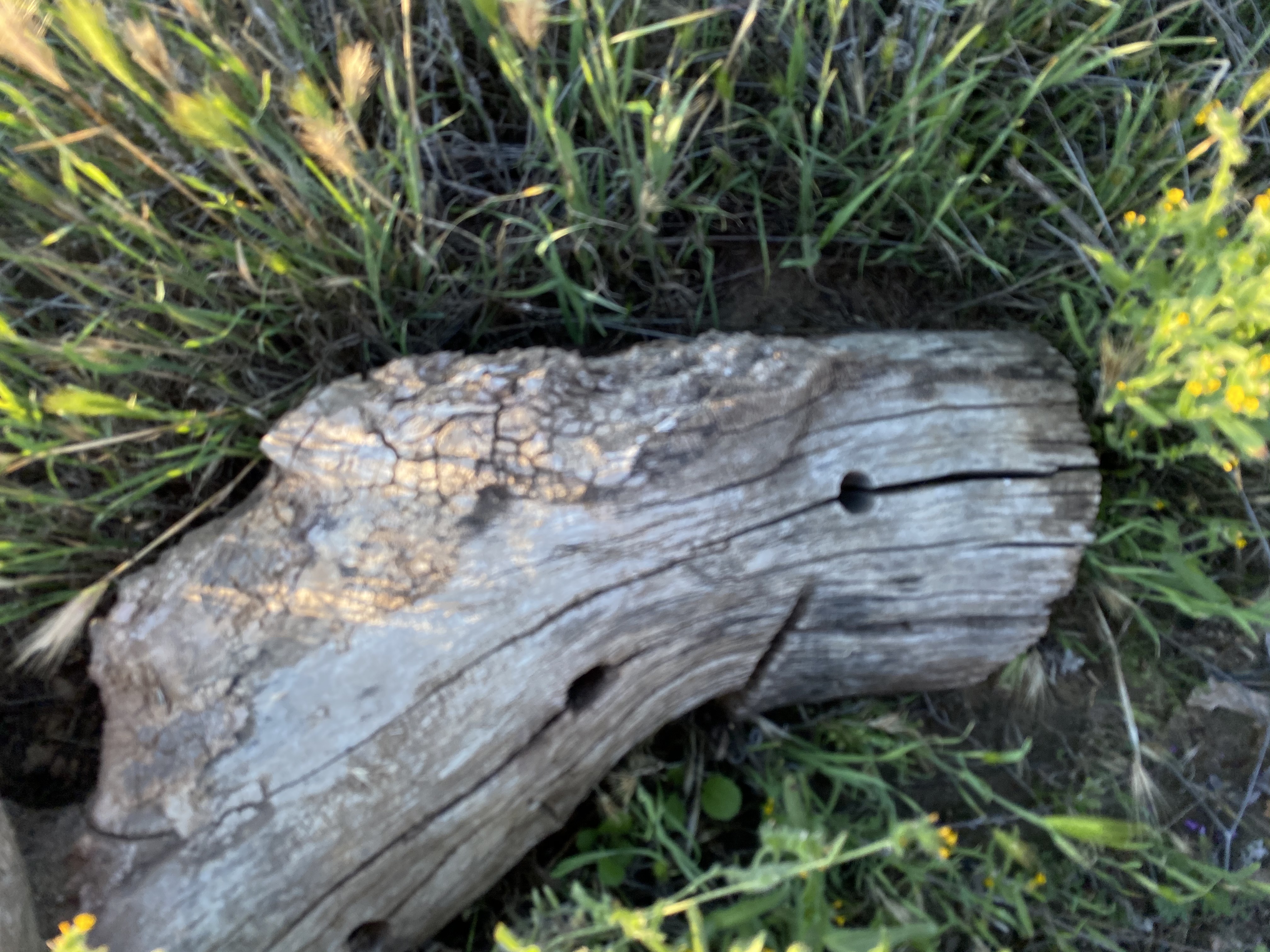
Date: March 31, 2020
Also called valley carpenter bee, is an important pollinator. This is a male. The female is all black. The round holes in the wood are typical of carpenter bee excavations.
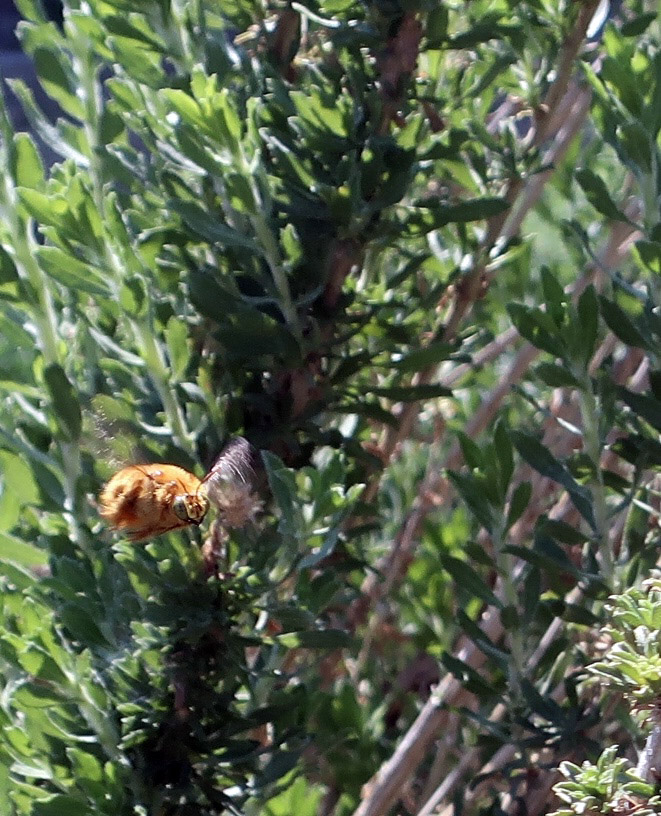
MILKWEED BUGS
milkweed bugs mating.
Class: Insecta, Order: Hemiptera, Family: Lygaeidae, Genus: Oncopeltus, Species: fasciatus
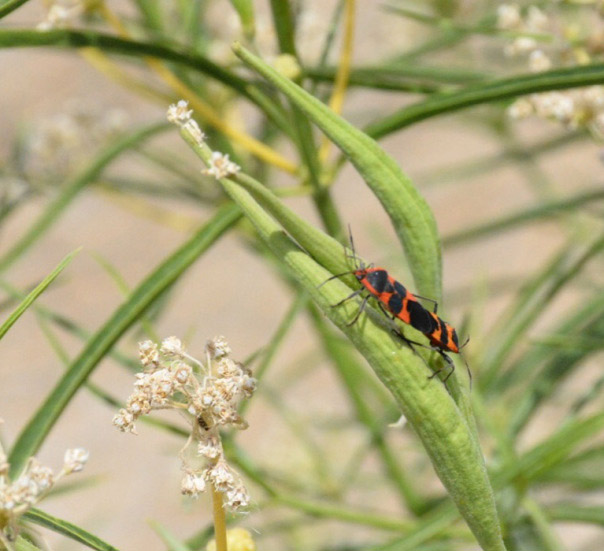
MONARCH BUTTERFLY
Class: Insecta, Order: Lepidoptera, Family: Nymphalidae, Genus: Danaus, Species: plexippus
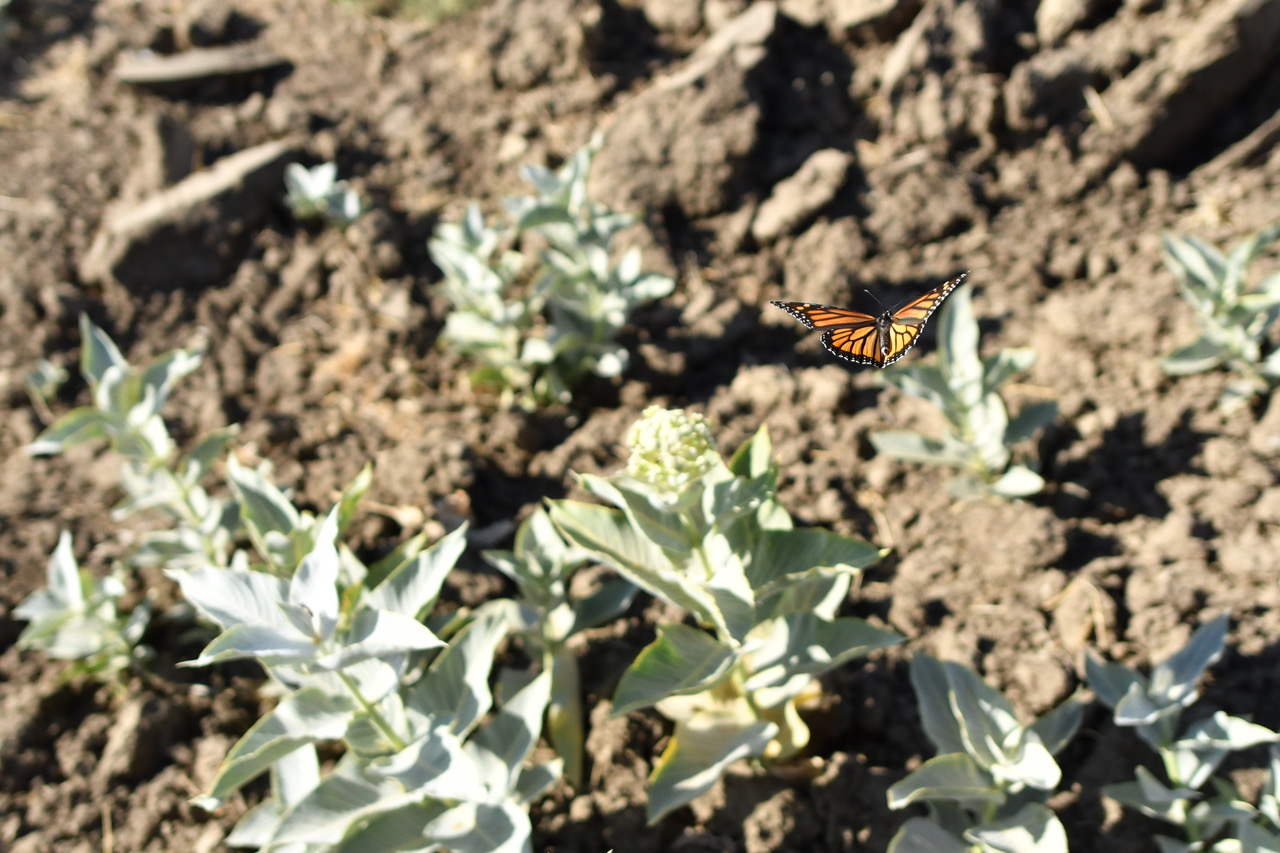
Date: August 21, 2019
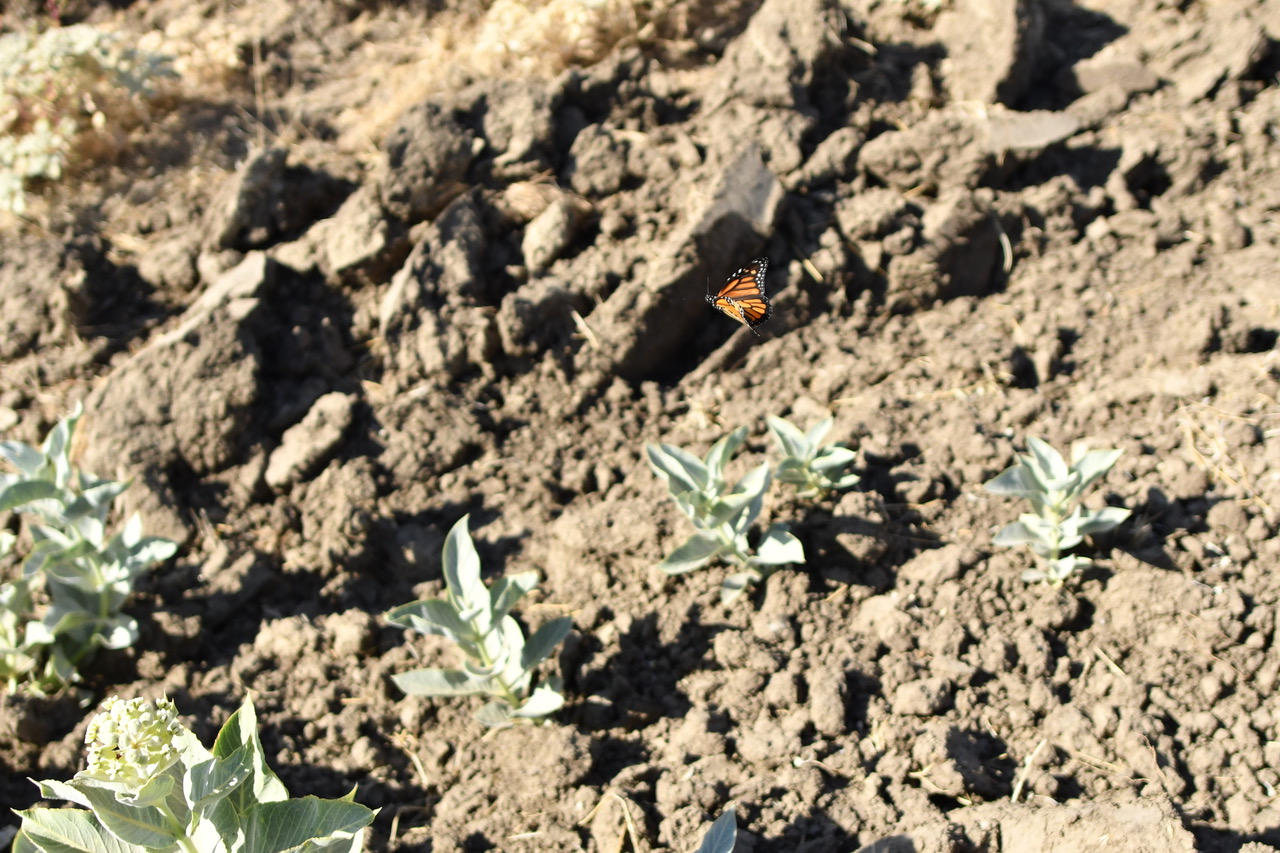
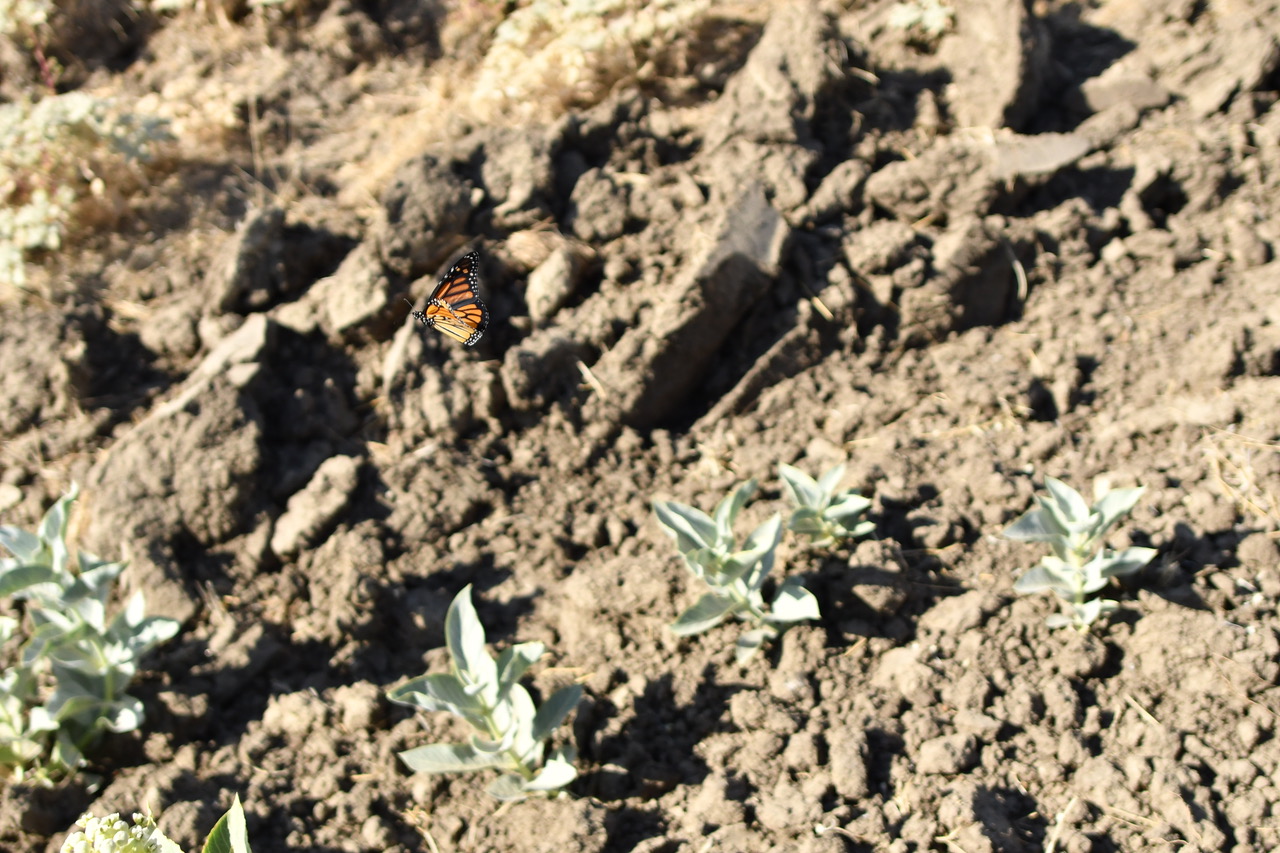
RED VELVET ANT
Class: Insecta, Order: Hymenoptera, Family: Mutillidae, Genus: Dasymutilla, Species: magnifica or klugii
Also called cow killer. Really a wasp with a sting only a few notches away.

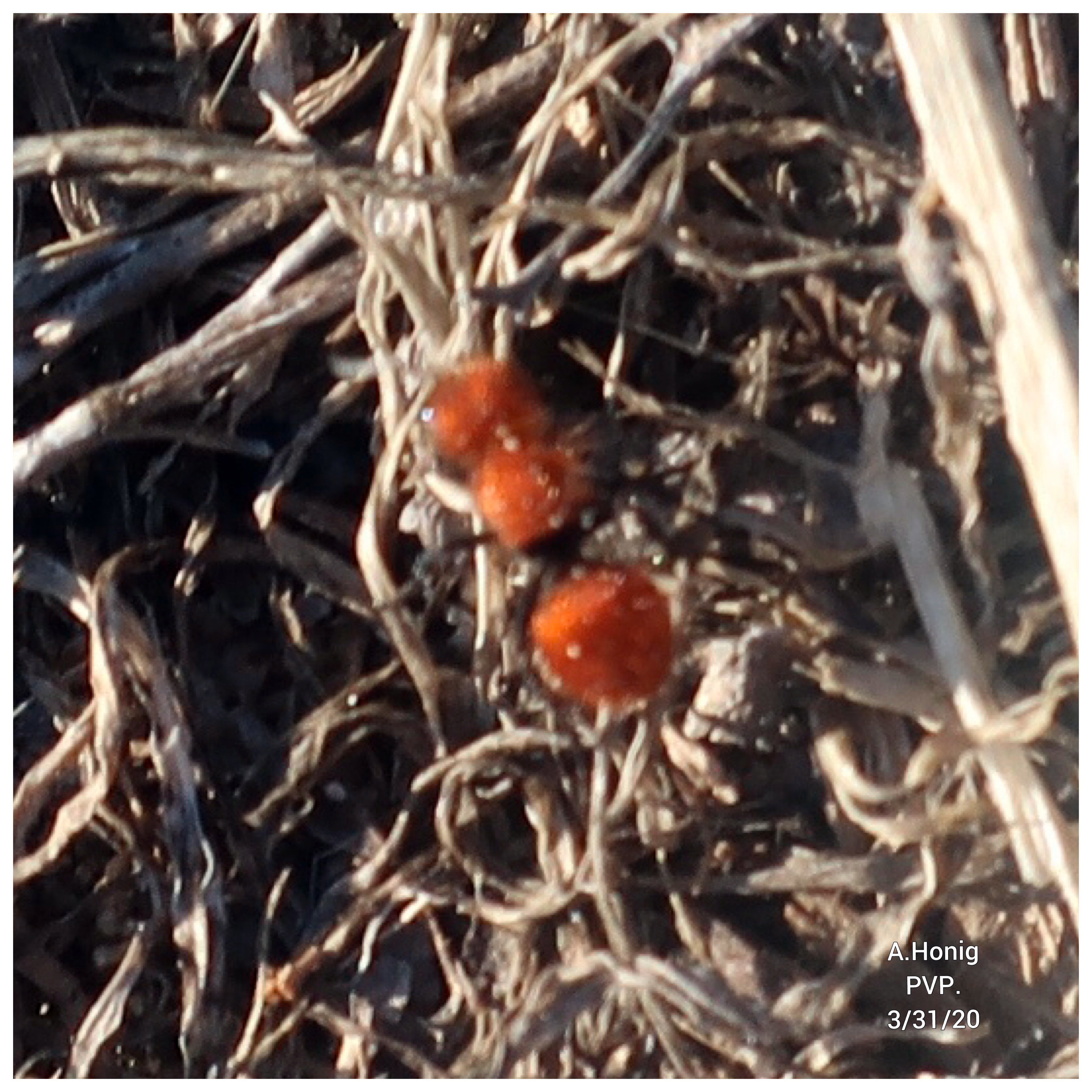
Date: March 31, 2020
TARANTULA HAWK
Phylum: Arthropoda, Class: Insecta, Order: Hymenoptera, Family: Pompilidae, Subfamily: Pepsinae, Genus: Hemipepsis, Species: ustulata
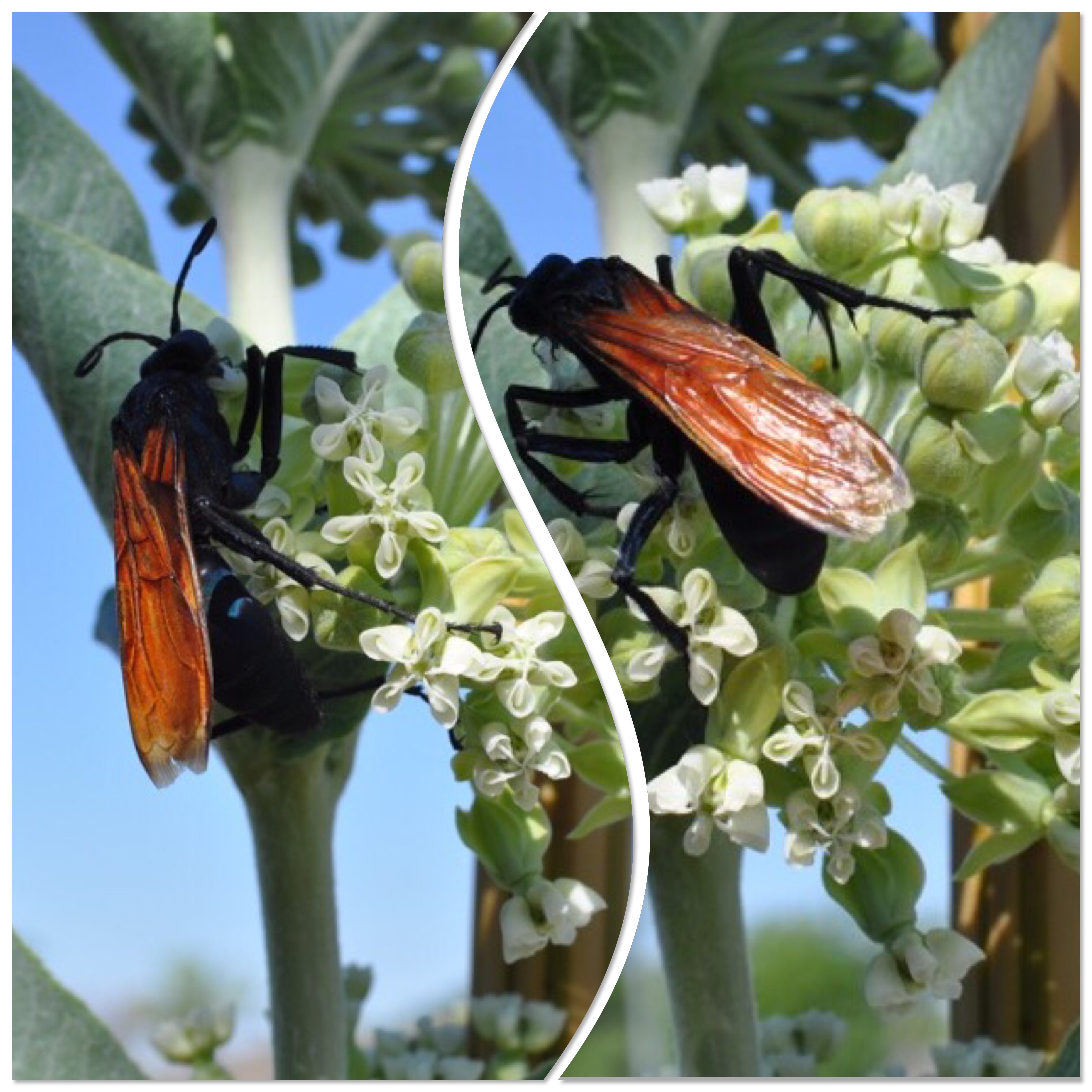
Tarántula hawks can often be seen flying around flowers of Desert Milkweed (A erosa). They feed on nectar of this and other desert plants and so are important pollinators. Their bright reddish-orange wings plus their large size make them easy to spot. It is best to leave one alone because this insect is actually a super-wasp whose sting is the second most painful in the world. Their curious name stems from their predatory relationship with tarántulas.
When a female tarántula hawk is ready to lay her eggs, she goes to an area where there are tarantula burrows; she then crawls around on the ground smelling for an occupied burrow. She taps on the webbed entrance, expecting the tarántula within (who is female) will think a male tarántula has come courting. But the spider has been snookered. No hairy male tarántula awaits her but a sleek, egg-laden tarántula hawk who promptly stings and paralyzes her. The wasp then lays her eggs in the body of the live spider. When the eggs hatch, the larvae feed on their zombie hostess.